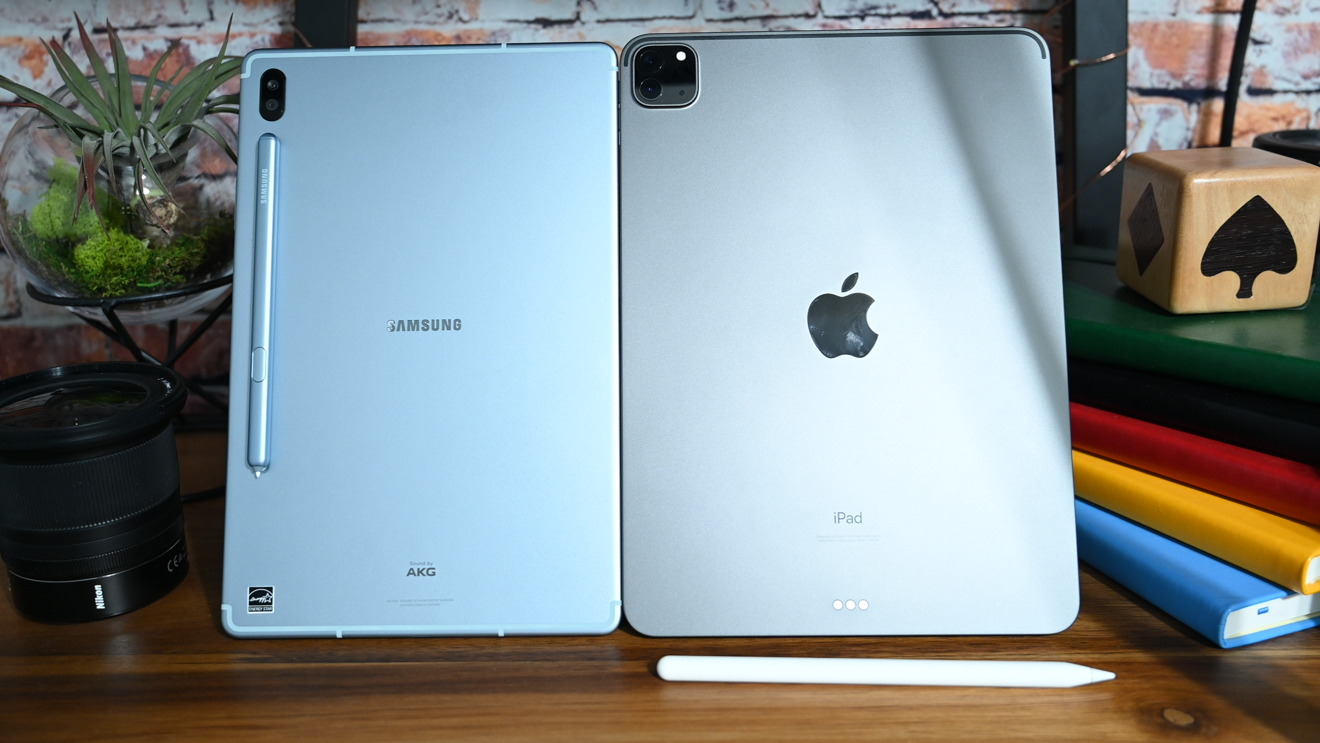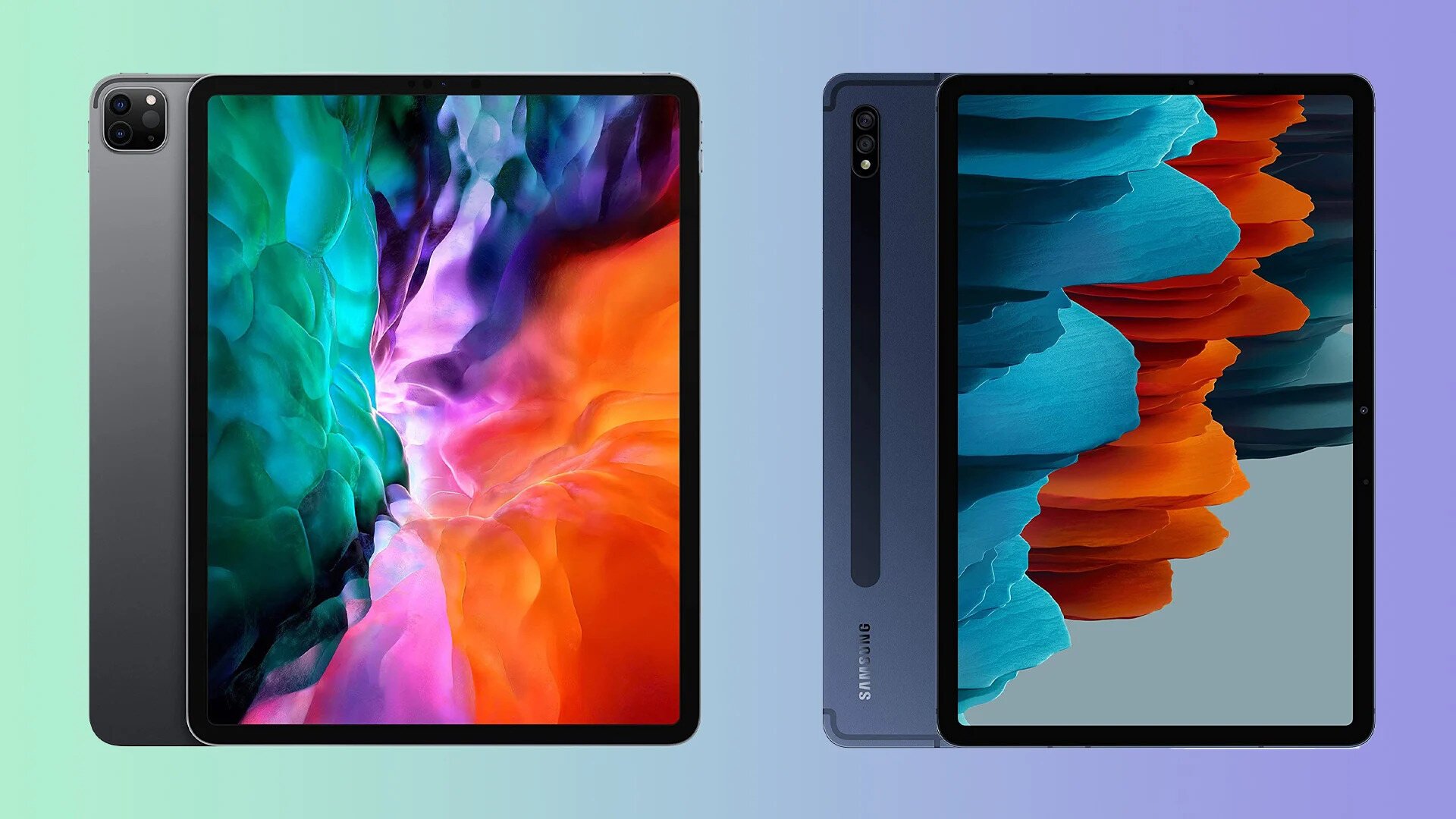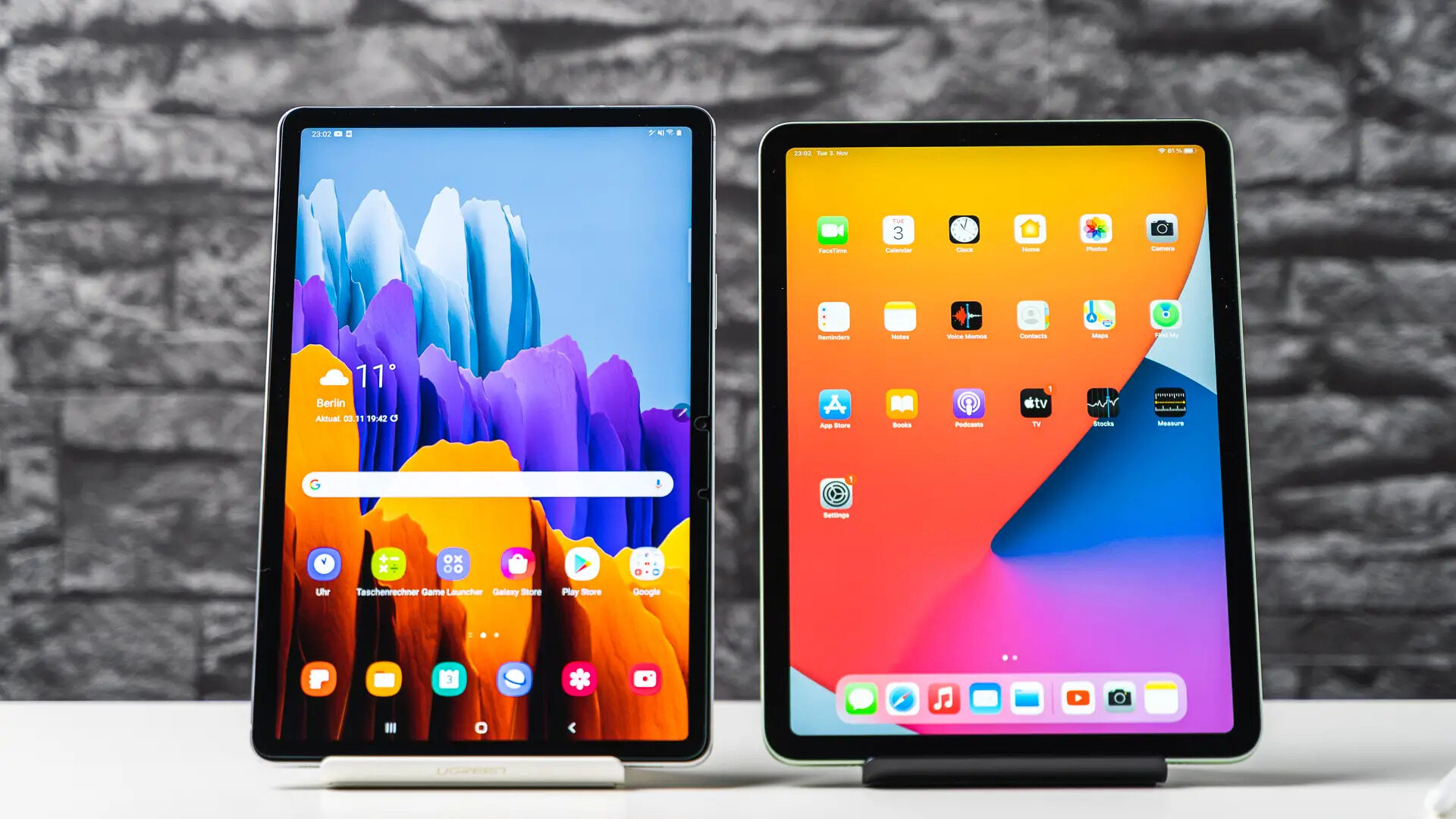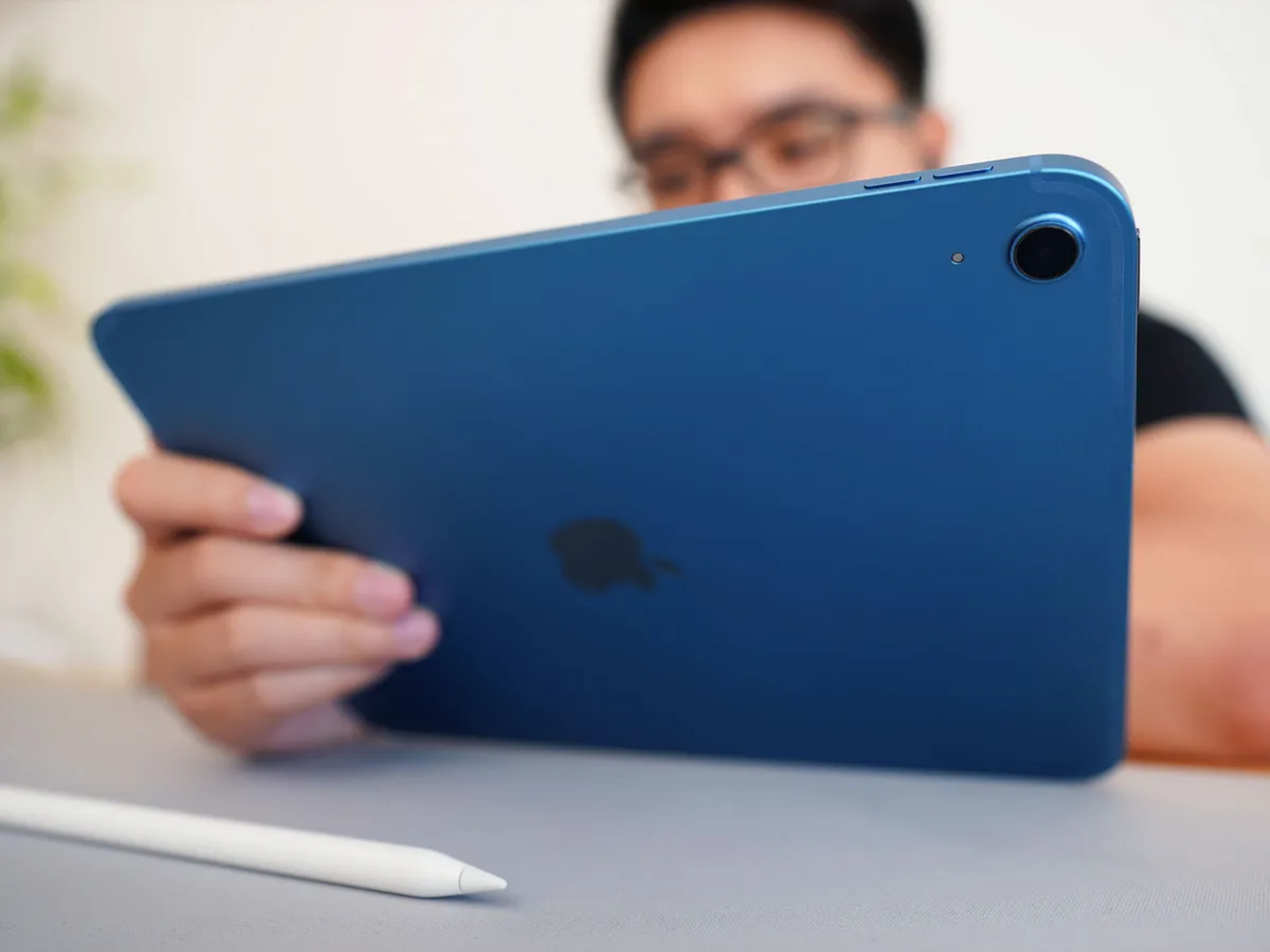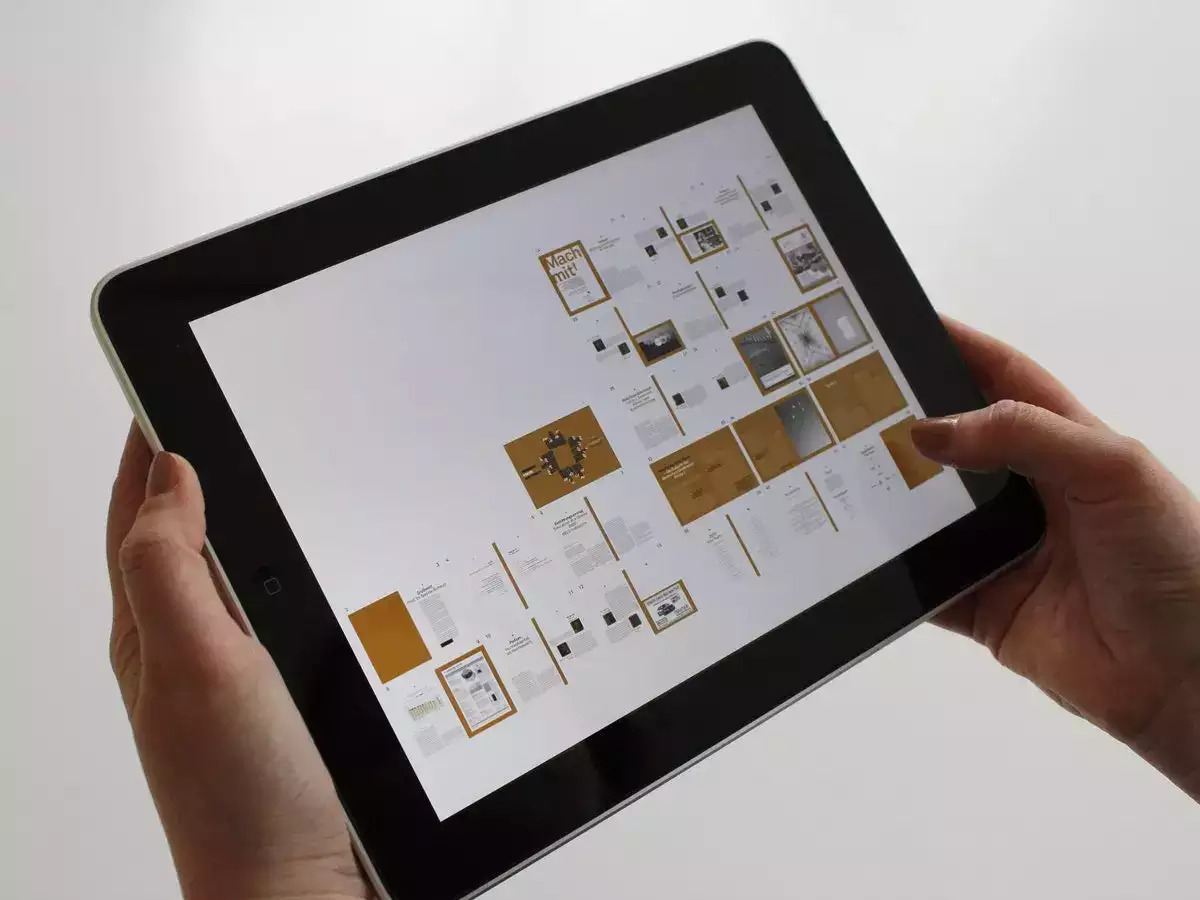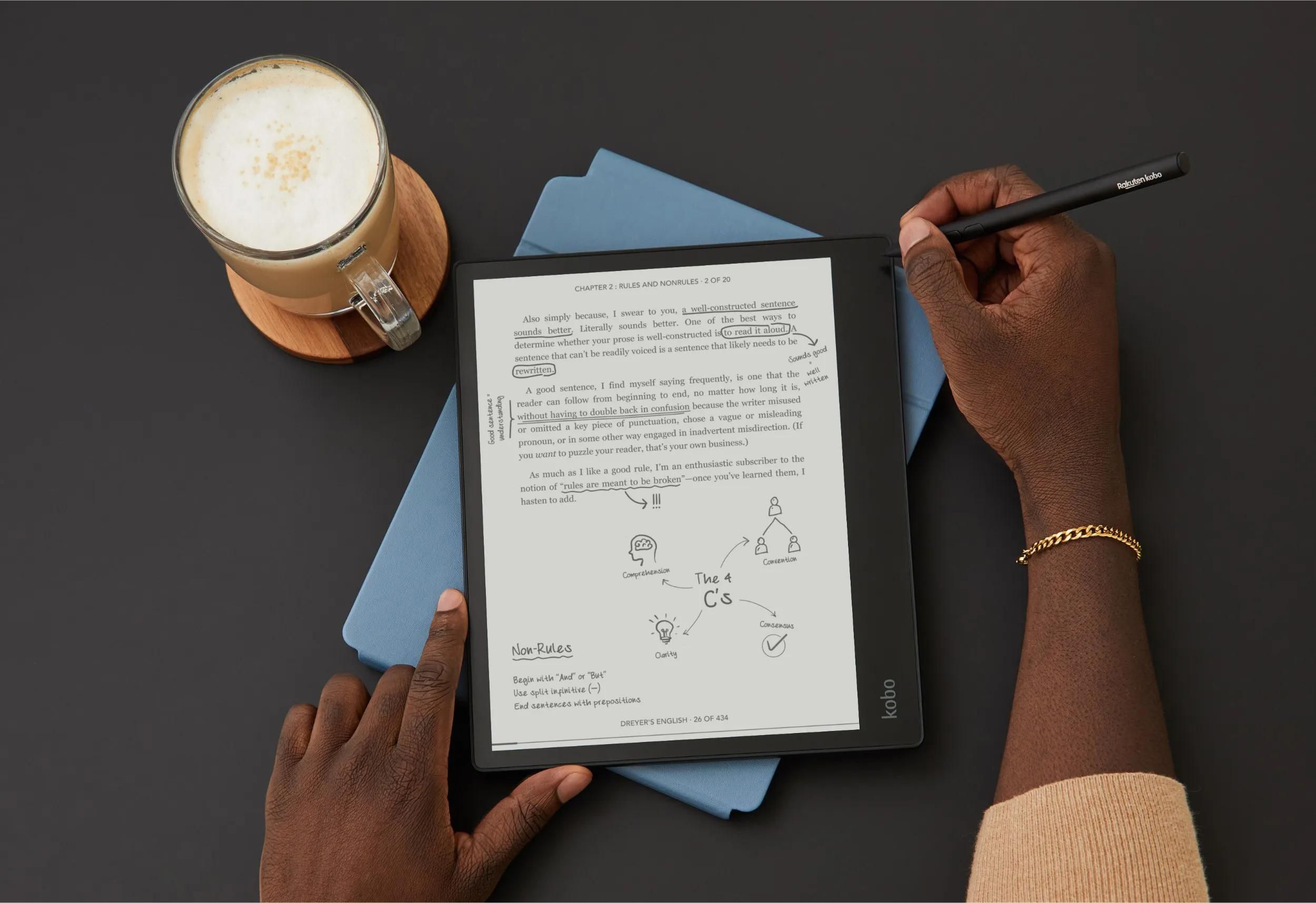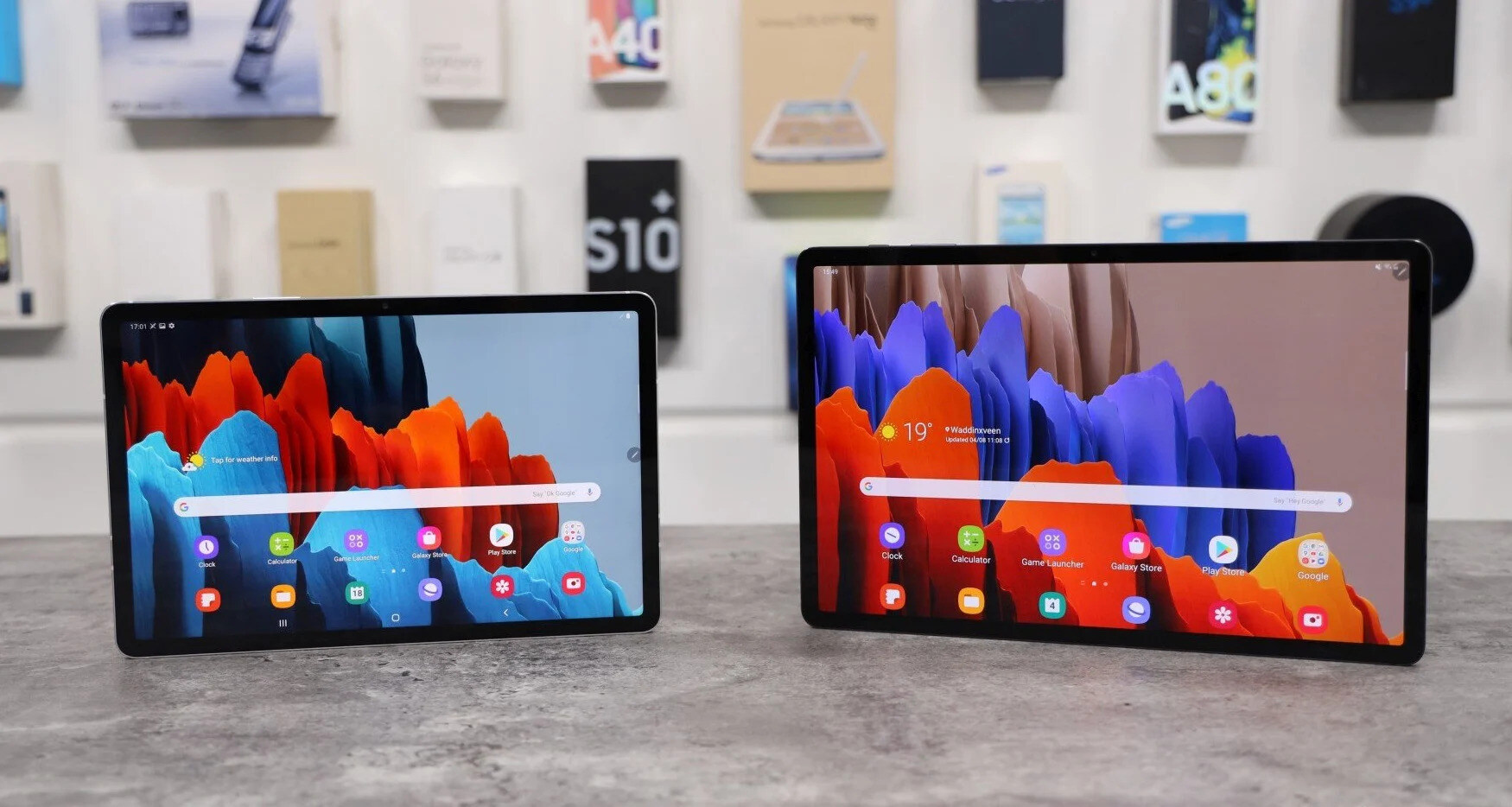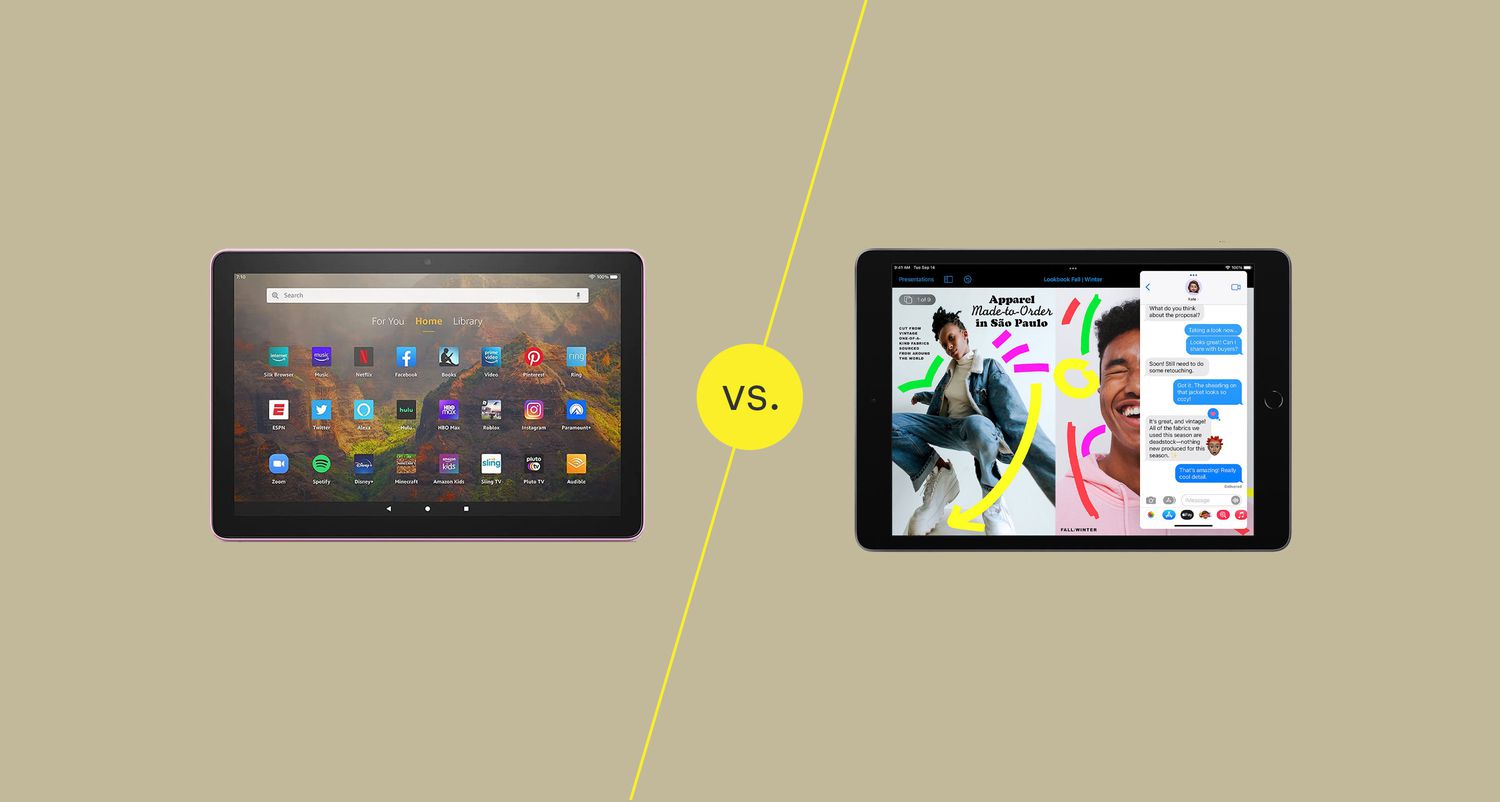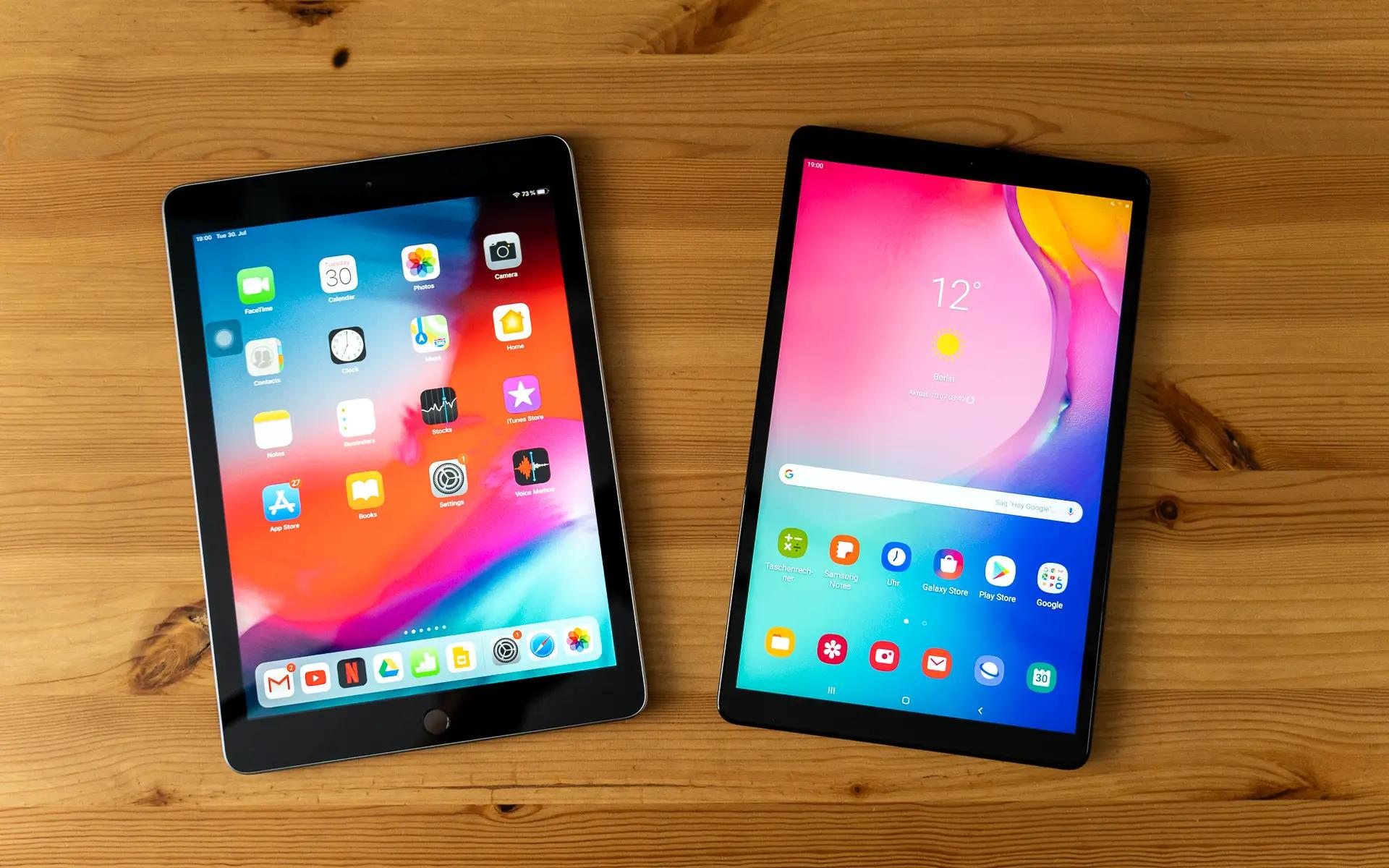Introduction
When it comes to portable devices, tablets have become increasingly popular choices for both personal and professional use. Two of the most prominent players in the tablet market are Apple’s iPad and Samsung’s range of tablets. With their sleek designs, powerful specifications, and a wide array of features, choosing between an iPad and a Samsung tablet can be a tough decision.
The iPad, known for its elegant and minimalist design, quickly revolutionized the tablet industry when it was first introduced in 2010. Apple’s commitment to creating a seamless user experience and their extensive ecosystem of apps and services have made the iPad a favorite among many consumers.
On the other hand, Samsung tablets have gained a solid reputation for their versatility and innovation. Offering a range of models with different specifications and sizes, Samsung has positioned itself as a strong competitor to the iPad.
In this article, we will compare and analyze various aspects of both iPad and Samsung tablets, including design, display, performance, operating system and user interface, apps and services, battery life, cameras, storage, connectivity, and pricing. By considering these factors, you can make an informed decision and choose the tablet that best suits your needs.
Whether you are a business professional looking for a powerful device for work, a student needing a tablet for educational purposes, or simply someone who wants a versatile device for entertainment and everyday tasks, both the iPad and Samsung tablets offer unique features and benefits.
Now, let’s dive into the details of these two tablet options and explore the strengths and weaknesses of each to determine which is the better choice for you.
Design
The design of a tablet plays a crucial role in determining its overall appeal and usability. Both the iPad and Samsung tablets boast sleek and stylish designs, but they differ in certain aspects.
Apple’s iPad is renowned for its iconic design language, characterized by its minimalist and clean aesthetics. The iPad features a slim profile with rounded edges and a seamless aluminum or glass construction, giving it a premium and premium feel. The attention to detail is evident in every aspect of the design, from the placement of buttons to the symmetry of the device.
On the other hand, Samsung tablets exhibit a more contemporary and modern design approach. Samsung offers a range of tablet models, each with its own unique design elements. Some models feature a sleek metal body, while others sport a lightweight plastic construction. Samsung tablets also tend to have narrower bezels compared to the iPad, resulting in a higher screen-to-body ratio and a more immersive viewing experience.
When it comes to size and weight, both the iPad and Samsung tablets come in different variants to cater to different user preferences. Apple offers the standard iPad with a 10.2-inch display, as well as the iPad Pro models with larger screen sizes. Samsung tablets, on the other hand, come in various sizes ranging from 7 inches to 12.4 inches, providing more options for users who prefer a compact or larger tablet.
Another aspect of design worth considering is the placement and functionality of physical buttons. Apple uses a minimalist approach, with a single home button (on older iPad models) or no physical buttons (on newer models), relying primarily on gesture-based controls. In contrast, Samsung tablets typically have physical buttons for power, volume control, and sometimes a dedicated button for accessing certain features like the S Pen.
In the end, the choice between the iPad and Samsung tablet design boils down to personal preference. If you appreciate a sleek and refined design with attention to detail, the iPad may be the ideal choice. On the other hand, if you prefer a modern and customizable design with options for different screen sizes, Samsung tablets offer a wider range of choices.
Display
The display is a crucial aspect to consider when choosing a tablet, as it directly affects the visual experience and usability of the device. Both the iPad and Samsung tablets offer high-quality displays, but there are differences in terms of size, resolution, and technology.
The iPad is known for its exceptional display quality, with vibrant colors and sharp details. The latest iPad models feature Retina displays, which offer high pixel density, resulting in crisp and clear visuals. The size of the iPad’s display can vary depending on the model, with options ranging from 10.2 inches on the standard iPad to larger displays on iPad Pro models.
Samsung tablets, on the other hand, also offer a range of display options. Samsung utilizes AMOLED or LCD technology in their tablets, depending on the model. AMOLED displays provide deep blacks, vibrant colors, and excellent contrast, making them ideal for multimedia consumption. LCD displays, while not as vibrant as AMOLED, still deliver good color reproduction and sharpness.
One advantage of Samsung tablets is the availability of models with larger displays. If you prefer a more immersive viewing experience, Samsung offers tablets with screen sizes up to 12.4 inches, providing a spacious canvas for media consumption, productivity, and other tasks.
Another aspect to consider is the aspect ratio of the display. The iPad typically features a 4:3 aspect ratio, which is well-suited for web browsing, reading, and productivity tasks. Samsung tablets, on the other hand, often have a 16:10 or 16:9 aspect ratio, which is more ideal for multimedia content like videos and games.
Both Apple and Samsung incorporate features such as True Tone (on iPad) and adaptive display technology (on Samsung tablets) to automatically adjust the screen’s color temperature and brightness based on the surrounding environment, providing a more comfortable viewing experience.
In terms of resolution, both the iPad and Samsung tablets offer crisp and detailed displays. The exact resolution varies depending on the model, but it’s worth noting that Apple’s Retina displays and Samsung’s AMOLED displays generally provide a high level of detail.
Ultimately, choosing the better display between the iPad and Samsung tablets depends on your needs and preferences. If you prioritize a vibrant display with great color accuracy, the iPad’s True Tone display may be the preferred choice. On the other hand, if you desire larger display options and the benefits of AMOLED technology, Samsung tablets offer enticing alternatives.
Performance
When it comes to performance, both the iPad and Samsung tablets are equipped with powerful hardware to deliver smooth and efficient operation. However, there are some notable differences in terms of processing power, multitasking capabilities, and overall performance.
The iPad is known for its impressive performance, thanks to Apple’s custom-designed processors. The latest iPad models are powered by the Apple A-series chips, which offer exceptional speed and efficiency. These processors are optimized specifically for Apple’s hardware and software integration, resulting in fast and responsive performance for a wide range of tasks.
Samsung tablets, on the other hand, are equipped with either Qualcomm Snapdragon or Samsung’s own Exynos processors, depending on the model and region. Samsung’s flagship tablets generally offer high-performance processors that can handle demanding tasks with ease. However, it’s worth noting that the performance of Samsung tablets can vary based on the specific model and chipset.
In terms of multitasking capabilities, both the iPad and Samsung tablets allow users to work with multiple apps simultaneously. The iPad’s iOS and iPadOS operating systems provide seamless multitasking features, such as Split View and Slide Over, which enable users to view and interact with multiple apps at the same time. Samsung tablets, running on Android, also offer multitasking capabilities, allowing users to split the screen or use floating windows for enhanced productivity.
When it comes to gaming, both the iPad and Samsung tablets offer a great gaming experience thanks to their powerful processors and high-quality displays. However, the iPad has the advantage of a more extensive and curated selection of gaming apps in the App Store, which can provide a wider range of gaming options compared to Samsung tablets.
Another important factor in performance is the software optimization. Apple’s tight integration of hardware and software allows for optimized performance and efficient use of system resources. On the other hand, Samsung tablets may have more freedom and flexibility due to the open-source nature of the Android operating system, but it may not always result in the same level of optimization as seen in the iPad.
In terms of storage and RAM, both the iPad and Samsung tablets offer options ranging from 32GB to higher capacities, depending on the model. The amount of RAM also varies, with higher-end models generally offering more RAM for smoother multitasking and performance.
In summary, both the iPad and Samsung tablets deliver impressive performance for various tasks. The iPad’s optimized hardware and software integration provide a seamless and efficient experience, while Samsung tablets offer powerful processors and multitasking capabilities. When choosing between the two, it’s important to consider your specific use cases and preferences.
Operating System and User Interface
The operating system (OS) and user interface (UI) are critical elements that significantly impact the overall user experience on a tablet. Both the iPad and Samsung tablets run different operating systems and offer distinct user interfaces, each with its own set of strengths and features.
The iPad operates on Apple’s iOS or iPadOS, depending on the model. iOS is known for its simplicity and user-friendly interface, making it accessible even to those new to tablets. The UI is clean, intuitive, and designed to prioritize ease of use. Apple’s iOS ecosystem is tightly integrated, which allows for seamless synchronization across devices and a consistent user experience.
With iPadOS, Apple has introduced features specific to the iPad, such as split-screen multitasking, drag-and-drop functionality, and improved file management, catering to the productivity needs of users. The App Store for iPad offers a vast selection of high-quality apps that are curated and optimized for the iPad’s larger display.
On the other hand, Samsung tablets generally run on the Android operating system, customized with Samsung’s own user interface called One UI. Android offers a more open and customizable experience, allowing users to personalize their device to a greater extent. One UI enhances the Android experience with Samsung’s design elements and additional features like a Multi-Window mode for multitasking and a variety of customization options for the UI.
Samsung tablets also benefit from access to the Google Play Store, which offers a wide range of apps and services. However, it’s worth noting that app optimization can sometimes vary between iOS and Android, with some apps being more optimized for the iPad ecosystem or having exclusive features on iOS.
Another point to consider is the integration with other devices and ecosystems. Apple’s ecosystem is known for its seamless connectivity with other Apple devices, such as iPhones, Macs, and Apple Watches. This integration allows for smooth transfer of files and data, enhanced messaging and calling features, and the convenience of using multiple Apple devices together. Samsung tablets, while also offering integration with other Samsung devices, may not have the same level of integration as Apple’s ecosystem.
Ultimately, the choice between the iPad’s iOS/iPadOS and Samsung tablets’ Android/One UI depends on personal preference and familiarity with the operating systems. iOS is known for its simplicity and seamless integration, while Android offers more customization options and a wider array of apps. Consider your needs, preferences, and the overall ecosystem you are already invested in when making a decision.
Apps and Services
When it comes to apps and services, both the iPad and Samsung tablets offer a wide range of options to enhance your tablet experience. However, there are key differences in the availability, ecosystem, and quality of apps and services on each platform.
The App Store is a standout feature of the iPad, offering a vast selection of apps curated specifically for iOS and iPadOS. The App Store is known for its stringent review process, which ensures that apps meet Apple’s quality standards. This means that you can expect a higher level of app optimization and a wider variety of high-quality apps designed specifically for the iPad.
Apple’s own suite of apps, such as Pages, Keynote, Numbers, and GarageBand, provides powerful tools for productivity, creativity, and entertainment. These apps are designed to work seamlessly with the iPad and offer advanced features that can enhance your workflow and productivity. Additionally, the iPad supports popular third-party apps like Adobe Creative Cloud, Microsoft Office, and Procreate, allowing users to explore a vast ecosystem of apps to suit their needs.
Samsung tablets running on Android have access to the Google Play Store, which offers an extensive collection of apps, including popular social media platforms, productivity tools, entertainment apps, and more. The Play Store also provides a wide range of customization options, allowing users to personalize their devices and tailor the tablet to their specific preferences.
While the Google Play Store offers a larger selection of apps, it’s worth noting that not all apps may be optimized for tablets. Some apps designed for smartphones may not adapt well to larger tablet screens, resulting in a less than optimal user experience. However, this gap has been decreasing over the years as developers continue to optimize their apps for larger displays.
As for services, both the iPad and Samsung tablets offer access to popular streaming platforms like Netflix, Hulu, Spotify, and more. Both platforms also provide cloud storage services, with Apple offering iCloud and Samsung offering Samsung Cloud. These services allow users to store and sync their files, photos, and other data across devices.
Both Apple and Samsung offer their own digital assistant technologies, with Apple’s Siri and Samsung’s Bixby. These virtual assistants can help with tasks, answer questions, provide information, and control various functions on the tablet.
Ultimately, the choice between the iPad and Samsung tablets in terms of apps and services depends on your specific needs, preferences, and the ecosystem you are already invested in. If you prioritize a curated selection of optimized apps with a seamless user experience, the iPad and the App Store offer a compelling choice. If you value customization options and a wider range of app selections, Samsung tablets running Android and the Google Play Store can cater to your preferences.
Battery Life
Battery life is a crucial factor to consider when choosing a tablet, as it determines how long you can use the device on a single charge. Both the iPad and Samsung tablets are designed to offer long-lasting battery performance, but there are differences in terms of battery capacity, optimization, and power management.
Apple’s iPads are known for their excellent battery life. The exact battery capacity varies depending on the model, but iPads generally offer all-day battery life, allowing you to use the tablet for several hours without needing to recharge. Apple’s hardware and software integration plays a significant role in optimizing the iPad’s battery life. The company’s custom-designed processors and efficient operating systems like iOS and iPadOS are designed to minimize battery drain and maximize usage time.
Samsung tablets also offer respectable battery life. Depending on the model, Samsung tablets have varying battery capacities, but they are designed to provide sufficient power to last through a day of use. Samsung’s power management features, combined with the versatility of the Android operating system, help ensure optimal battery performance. However, the battery life of Samsung tablets can vary depending on the specific model and usage patterns.
It’s worth noting that actual battery life can vary based on various factors, such as screen brightness, app usage, internet connectivity, and multimedia consumption. Intensive tasks like gaming or video editing tend to drain the battery faster compared to more basic tasks like web browsing or reading.
Charging is another aspect to consider. Both the iPad and Samsung tablets generally support fast charging, allowing you to recharge the battery quickly when needed. However, the charging speed and methods can vary between models, so it’s important to check the specifications of the specific tablets you are considering.
In summary, both the iPad and Samsung tablets offer solid battery life that can last through a day of use. The iPad’s optimization and integration between hardware and software contribute to its impressive battery performance, whereas Samsung tablets, running on the versatile Android operating system, also provide respectable battery life. When comparing battery life between the two, it’s essential to consider the specific models, usage patterns, and individual needs to make an informed decision.
Cameras
The cameras on a tablet have become increasingly important, as they allow users to capture photos and videos, participate in video calls, and engage in various multimedia activities. Both the iPad and Samsung tablets offer built-in cameras, but there are differences in terms of camera quality, features, and performance.
Apple’s iPads are known for their impressive camera capabilities. The latest iPad models feature high-quality rear cameras that can capture detailed photos and videos. These cameras are equipped with advanced features such as optical image stabilization, autofocus, burst mode, and HDR support, allowing users to take stunning shots even in challenging lighting conditions.
iPads also excel in video recording, with the ability to shoot in 4K resolution and take advantage of features like cinematic video stabilization and slow-motion capture. This makes iPads a great option for content creators or users who enjoy capturing videos on the go.
Front-facing cameras on iPads are designed for FaceTime calls and selfies. They deliver decent image quality for video calls and allow users to take self-portraits with ease. The latest iPad models also have a TrueDepth camera system, which enables features like Face ID facial recognition and Animoji/Memoji customization.
Samsung tablets also come equipped with rear and front-facing cameras. The camera quality and features on Samsung tablets can vary depending on the model. Higher-end models typically offer better camera capabilities, with features such as high-resolution sensors, optical image stabilization, and various shooting modes. Samsung tablets also support video recording in 4K resolution and offer features like Super Slow-Mo for capturing dramatic slow-motion videos.
Front-facing cameras on Samsung tablets are designed for video calls and taking selfies. These cameras provide decent image quality for video calls and enable users to capture self-portraits. Some Samsung tablet models also incorporate facial recognition technology for secure device unlocking.
It’s worth noting that while both the iPad and Samsung tablets offer good camera capabilities, they may not match the quality and features of dedicated cameras or smartphones. However, in terms of tablet photography and video recording, both options can deliver satisfactory results for everyday use.
When evaluating camera performance, it’s essential to consider individual preferences and usage patterns. If camera quality and advanced features are a priority, the iPad’s camera capabilities might offer a more compelling choice. On the other hand, Samsung tablets provide a range of models to suit varying needs and budget constraints.
Storage
Storage capacity is an important consideration when choosing a tablet, as it determines how much data, apps, files, and media you can store on the device. Both the iPad and Samsung tablets offer various storage options, but there are differences in terms of available storage capacities and expandability.
Apple’s iPads come with different storage options, typically ranging from 32GB to higher capacities such as 64GB, 128GB, 256GB, and even 512GB or 1TB on higher-end models. It’s important to choose a storage capacity that suits your needs, as upgrading storage on iPads is not possible after purchase. If you plan to store a large amount of media, such as photos, videos, and music, or have a need for numerous apps and files, opting for a higher storage capacity is advisable.
Samsung tablets offer a variety of storage options as well, with base models starting at 32GB or 64GB. However, one advantage of Samsung tablets is the expandable storage capability. Most Samsung tablets come with a microSD card slot, allowing you to insert a memory card to increase the storage capacity. This feature can be particularly useful for users who require additional storage for media files or want the flexibility to expand storage later on.
It’s important to note that the amount of usable storage may be slightly less than the advertised capacity, as the operating system and pre-installed apps occupy some space. Additionally, media files and apps can consume varying amounts of storage, so it’s advisable to consider your specific needs when selecting a tablet’s storage capacity.
When choosing between the iPad and Samsung tablets in terms of storage, consider factors such as the volume of data you plan to store, your preference for expandable storage, and the importance of having sufficient storage space for your desired apps and media files.
In summary, both the iPad and Samsung tablets provide a range of storage options to accommodate varying needs. While the iPad offers a wide range of built-in storage capacities, Samsung tablets offer the advantage of expandable storage through microSD card slots. Choosing the appropriate storage capacity depends on your specific usage requirements and preferences.
Connectivity
Connectivity features are crucial when it comes to utilizing your tablet to its full potential. Both the iPad and Samsung tablets offer a range of connectivity options to stay connected, access the internet, and interact with other devices and accessories.
Wi-Fi connectivity is a standard feature on both the iPad and Samsung tablets, allowing users to connect to wireless networks for internet access. Both devices support the latest Wi-Fi standards, ensuring fast and reliable connections. You can connect to your home or office network, public Wi-Fi hotspots, or mobile hotspot tethering from your smartphone.
In addition to Wi-Fi, many iPad and Samsung tablet models offer LTE or 4G cellular connectivity options. These models have built-in SIM card slots, allowing you to insert a nano-SIM card from a mobile carrier to access the internet on the go. Cellular connectivity provides the advantage of internet access even when Wi-Fi is unavailable, making it suitable for users who require constant connectivity while traveling or on the move.
Another connectivity feature to consider is Bluetooth, which both the iPad and Samsung tablets support. Bluetooth allows you to connect wirelessly to various devices such as headphones, speakers, keyboards, and more. This feature enhances the versatility and functionality of the tablet by enabling seamless connections with compatible accessories.
For data transfer and charging, both the iPad and Samsung tablets typically come with a proprietary charging and data transfer port. Apple iPads use Lightning ports, while Samsung tablets often use USB Type-C ports. These ports facilitate fast charging and enable data transfer between the tablet and a computer or other devices.
It’s worth noting that certain models of both the iPad and Samsung tablets may also support additional connectivity options such as NFC (Near Field Communication) for contactless payments and data exchange, or GPS for precise location tracking and navigation purposes.
When comparing connectivity options between the iPad and Samsung tablets, consider your specific needs and usage patterns. If you require constant internet access on the go, cellular connectivity may be a decisive factor. If you heavily rely on Bluetooth accessories or have specific requirements for data transfer or charging, consider the compatibility and usability of the respective tablet’s ports and connectivity options.
In summary, both the iPad and Samsung tablets offer various connectivity options, including Wi-Fi, cellular connectivity, Bluetooth, and wired data transfer. Choosing the right tablet in terms of connectivity depends on your individual needs for internet access, device compatibility, and data transfer requirements.
Pricing
Pricing is a crucial factor to consider when choosing between the iPad and Samsung tablets. Both options offer a range of models with varying specifications and features, leading to differences in pricing.
Apple’s iPad lineup includes a range of models at different price points, catering to various budget ranges. The standard iPad model is generally more affordable compared to the iPad Pro models, which offer higher-end features and specifications. The price variations are primarily driven by factors such as storage capacity, cellular connectivity options, and screen size.
Samsung tablets also have a diverse range of models with different price points. The cost can vary depending on factors such as the tablet’s display size, storage capacity, connectivity options, and additional features like stylus support or a higher-resolution screen.
In general, it’s important to consider the trade-off between price and the specific features and functionality you require. Evaluate your budget and prioritize the key features you need in a tablet. If price is a significant factor, opting for the entry-level or mid-range models of either the iPad or Samsung tablets may be a more suitable choice.
It’s also worth considering the long-term value and potential return on investment. Apple devices tend to have a longer software update cycle, which means the iPad may receive software updates and new features for a longer period of time compared to some Samsung tablet models.
Furthermore, considering the ecosystem you are already invested in can be important. If you have other Apple devices or already use services like Apple Music or iCloud, the seamless integration with the iPad may provide added value. On the other hand, if you already have a Samsung smartphone or use Google services extensively, the compatibility and integration benefits of a Samsung tablet may be more appealing.
In summary, pricing varies based on the model, specifications, and features of both the iPad and Samsung tablets. Compare the features, specifications, and overall value each tablet offers within your budget constraints to make an informed purchasing decision. Consider the long-term value, potential return on investment, and the ecosystem you are already invested in to determine which option provides the best value for your money.
Conclusion
Choosing between an iPad and a Samsung tablet ultimately comes down to your specific needs, preferences, and budget. Both options offer a range of models with their own unique features and strengths. Let’s summarize the key points to consider when making your decision.
The iPad is renowned for its elegant design, seamless user experience, and extensive ecosystem of highly optimized apps and services. Apple’s integration of hardware and software results in excellent performance, long-term software support, and a cohesive ecosystem if you are already using other Apple devices.
Samsung tablets, on the other hand, showcase versatility, customization options, and a range of models that cater to varying budgets and needs. Android’s open nature allows for greater flexibility, expandable storage options, and compatibility with a wide range of apps and services from the Google Play Store.
In terms of design, both options offer sleek and stylish designs, but Apple’s minimalist approach and attention to detail stand out, while Samsung’s range of models provides more options in terms of screen size and materials used.
When it comes to display, the iPad’s Retina display and Samsung’s AMOLED/LCD screens both deliver vibrant colors and sharp details. The choice comes down to personal preference, with the iPad offering a wider selection of optimized apps and the advantage of True Tone display technology.
Performance-wise, both the iPad and Samsung tablets offer powerful processors and multitasking capabilities. The iPad’s custom-designed processors and efficient software integration provide a seamless and optimized experience, while Samsung tablets offer versatility and the potential for more customization options due to the open-source nature of Android.
The choice between iOS/iPadOS and Android/One UI for the operating system depends on your familiarity, ecosystem preferences, and the level of customization you desire.
In terms of apps and services, the iPad’s App Store provides a curated selection of high-quality apps that are optimized for the iPad, while the Google Play Store offers a wider variety of apps for Samsung tablets. Consider your specific app requirements, preferences, and the overall ecosystem you are already invested in.
Battery life on both the iPad and Samsung tablets is respectable, but it may vary depending on specific models and usage patterns. Take into account your typical usage and whether you require long-lasting battery performance without the need for frequent charging.
Connectivity options such as Wi-Fi, cellular connectivity, Bluetooth, and ports should be considered based on your specific needs for internet access, device compatibility, and data transfer requirements.
Pricing is an important factor, and both the iPad and Samsung tablets offer models at different price points. Consider the features, specifications, and overall value each tablet provides within your budget constraints.
In conclusion, the choice between an iPad and a Samsung tablet depends on your personal preferences and priorities. The iPad offers a refined and optimized ecosystem, exceptional app support, and a seamless user experience. Samsung tablets provide versatility, expandable storage options, and a range of models to cater to different budgets and needs. Assess your specific requirements, consider the factors discussed, and choose the tablet that best aligns with your individual needs and preferences.







